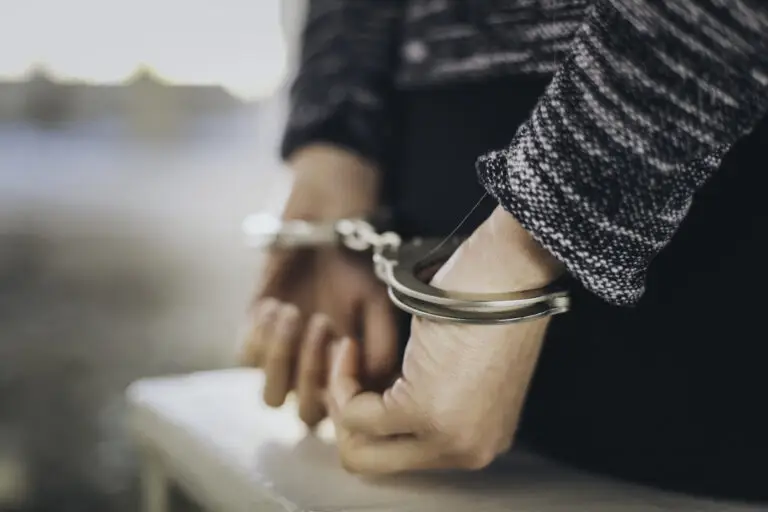
Any sophisticated arrest debriefing process must be instituted from the top down. The police chief has to be all in, and the chief must ensure the process is institutionalized so that it will continue beyond the chief’s tenure.
~ Barry M. Baker Tweet

Detective Lieutenant Barry M. Baker (ret.) is a 32 year veteran of the Baltimore Police Department.
The arrest debriefing can provide an effective information collection method to identify suspects responsible for serious criminal activity. Unfortunately, a police department that has a sophisticated process in place for tracking and disseminating information you develop is rare. However, that circumstance should in no way prevent you from using your initiative to develop and disseminate information.
As a special operations lieutenant, I had the district’s drug and vice enforcement under my command. I directed the officers in both units to conduct arrest debriefings with particular emphasis on homicides, rapes and robberies. That directive proved to be problematic, because officers in special units don’t like to stray from their areas of expertise.
My Own Homicide Detective for Arrest Debriefing
I found an ally in a sergeant with the Homicide Unit, and he detailed a detective for my project. The homicide detective conducted an arrest debriefing for every drug and prostitution arrest made during his tour of duty. The debriefings went on for eight months, and the results were dramatic.
That homicide detective identified 18 eyewitnesses to 13 separate homicides, and 11 of the 13 homicides were still open cases. He developed a lot of other information related to homicides. For example, one young woman arrested for prostitution described a conversation between two men known to her. She listened to one man describe to the other, in detail, a drug related murder he’d recently committed.
I was impressed, but I wasn’t surprised. Drug users and prostitutes see and hear everything. They’re constantly on the street seeking their drugs of choice, and they frequently witness serious crimes. What was really impressive about the eight month undertaking was the process developed. Just think what one detective in each of the city’s nine police districts could produce.
I distributed the results widely, and I did get one response from the department’s Chief of Patrol, “Impressive.” But, that’s as far as it went. I didn’t even get a response from the Chief of Detectives. While I was disappointed in the lack of interest, I wasn’t surprised.
Organizational Genius
The project did have the desired effect on the officers in my vice unit. They would go on to develop, database and distribute large amounts of information from the debriefings of prostitutes. Sergeant James Starleper, the unit’s supervisor, was my organizational genius. He had the ability to prepare and execute sophisticated multiple arrest operations. He provided a Command Post environment conducive to efficient processing and arrest debriefing. The women arrested were treated with respect, and the unit’s officers, at their own expense, provided food and soft drinks for those arrested.
A Positive Process with Stunning Results
The women were encouraged to communicate with one another. We wanted those awaiting their arrest debriefing to know what to expect, and the process worked well. During one of the large operations, one woman couldn’t wait to provide information. She left the group, and she approached an officer who was conferring with another officer.
The woman tugged the officer’s shirt sleeve. She stated, “I have some information.” The officer politely told her to return to the group; until, she was called for her interview. He turned back to the other officer, and the woman tugged his sleeve a second time. “You don’t understand,” she said. “I know where there’s a body.” This time, the woman had the officer’s full attention.
A Naked Corpse and Scalding Water
This woman had quite a story. Several days earlier, she was inside a house with a number of other people. She described witnessing four men beat another man to death, and the suspects’ attempt to make the victim unidentifiable. They placed the victim’s naked corpse into a bathtub filled with scalding hot water. She described how the skin came off the corpse and congealed around the edge of the tub.
This arrest debriefing could not give us the exact location of the body, but it did provide its general location. The suspects had buried the victim in a city park with a notorious reputation as a final destination for murder victims.
A K-9 search of the park that night failed to locate the body. It was decided that Homicide detectives and K-9 would return at daylight to conduct a more extensive search. However, just after daybreak, a second prostitute, not one of those arrested the night before, called police. She led officers to a shallow grave containing a disfigured man as described in the arrest debriefing.
It didn’t take long for us to identify the victim and the four suspects. There was a missing person report on file for the victim. A routine missing person turned to murder, and we solved it before we had a body thanks to an arrest debriefing.
Never Underestimate the Value of the Arrest Debriefing
It was my goal to institutionalize an arrest debriefing regimen throughout the Baltimore Police Department. I never succeeded beyond my small piece of the organization, but others should never stop trying. Institutionalizing anything is always the challenge to be overcome, because police officers are independent by nature. Any sophisticated arrest debriefing process must be instituted from the top down. The police chief has to be all in, and the chief must ensure the process is institutionalized so that it will continue beyond the chief’s tenure.
Related Content for Arrest Debriefing
Advertisements


